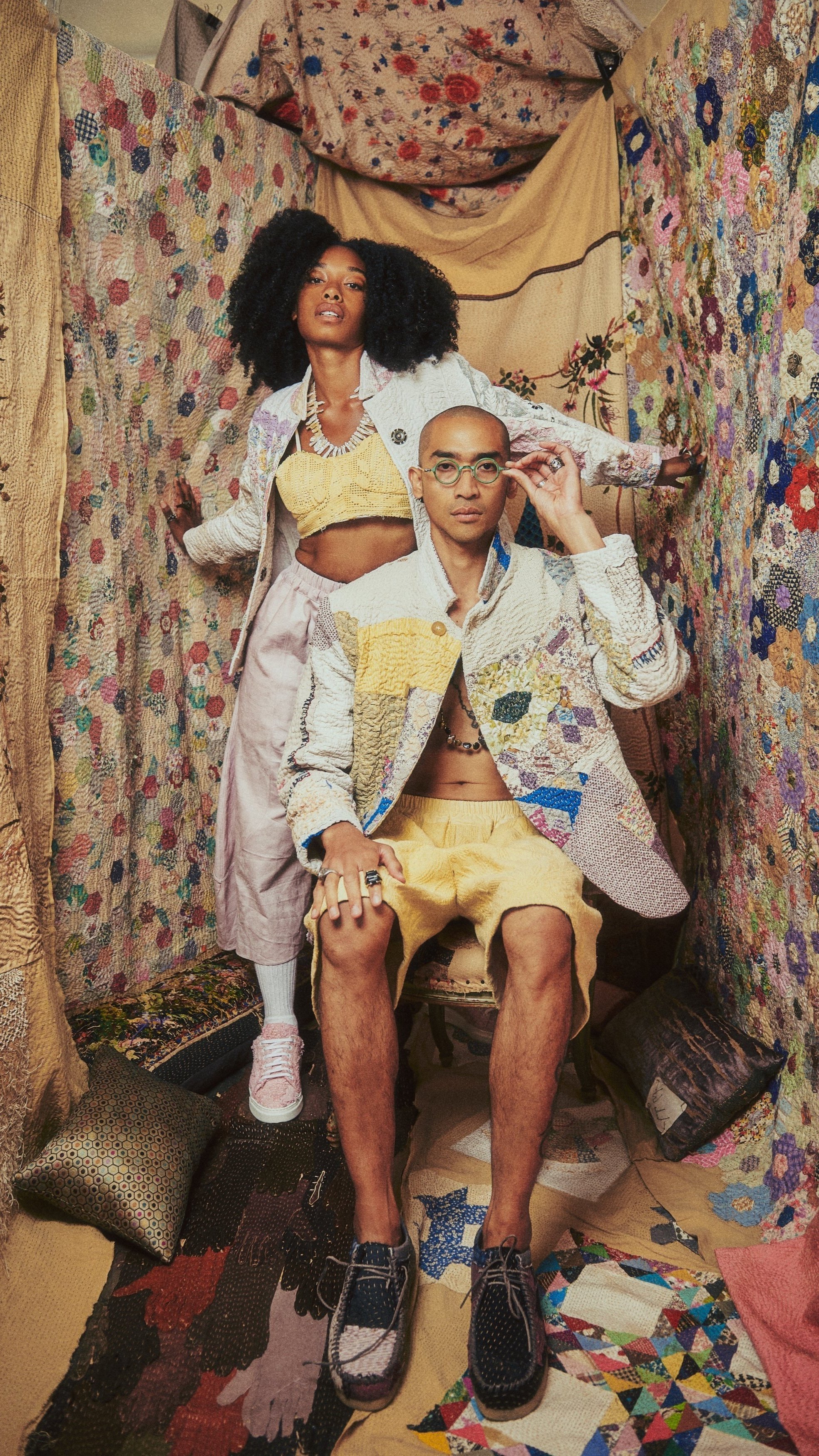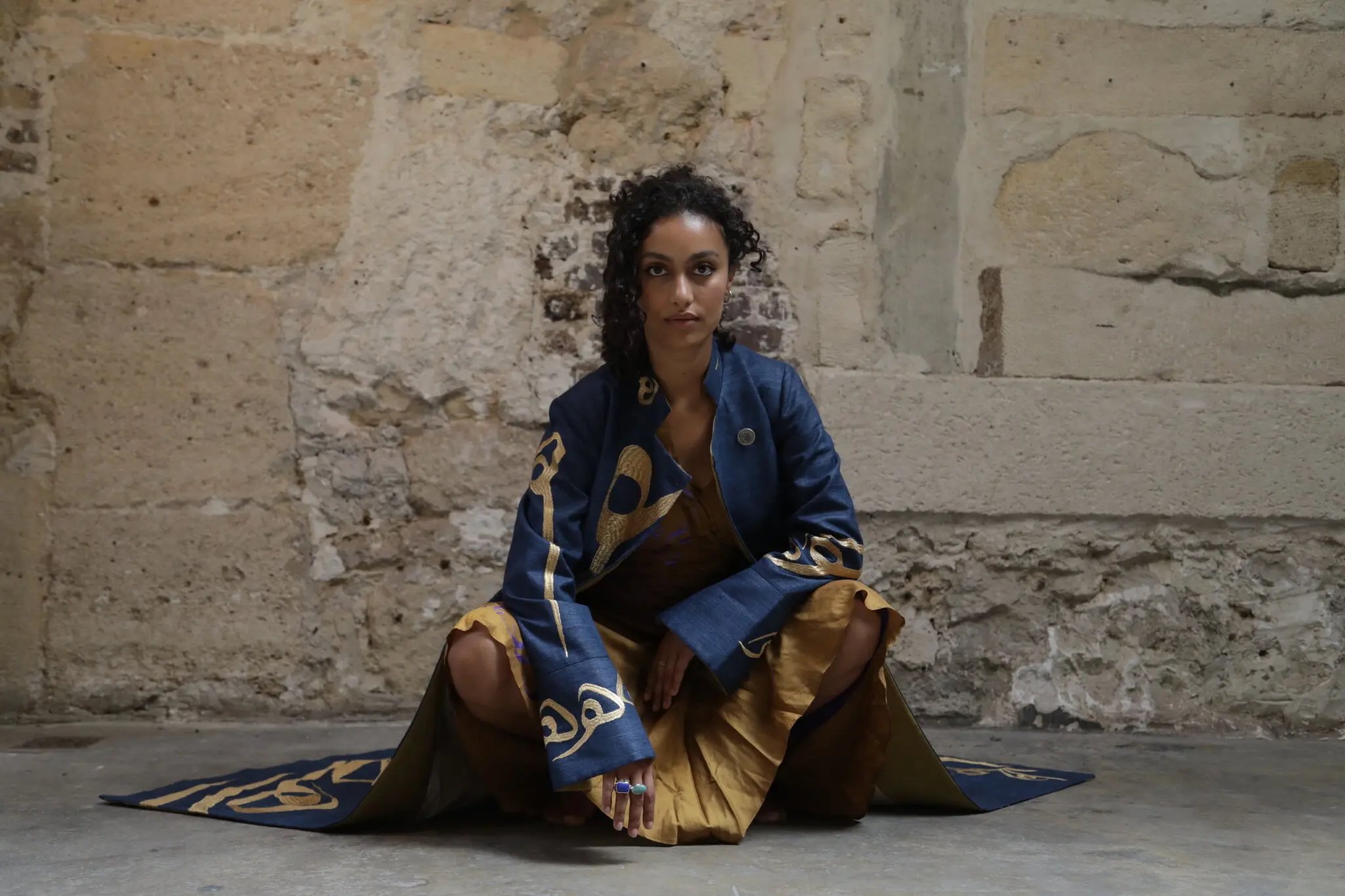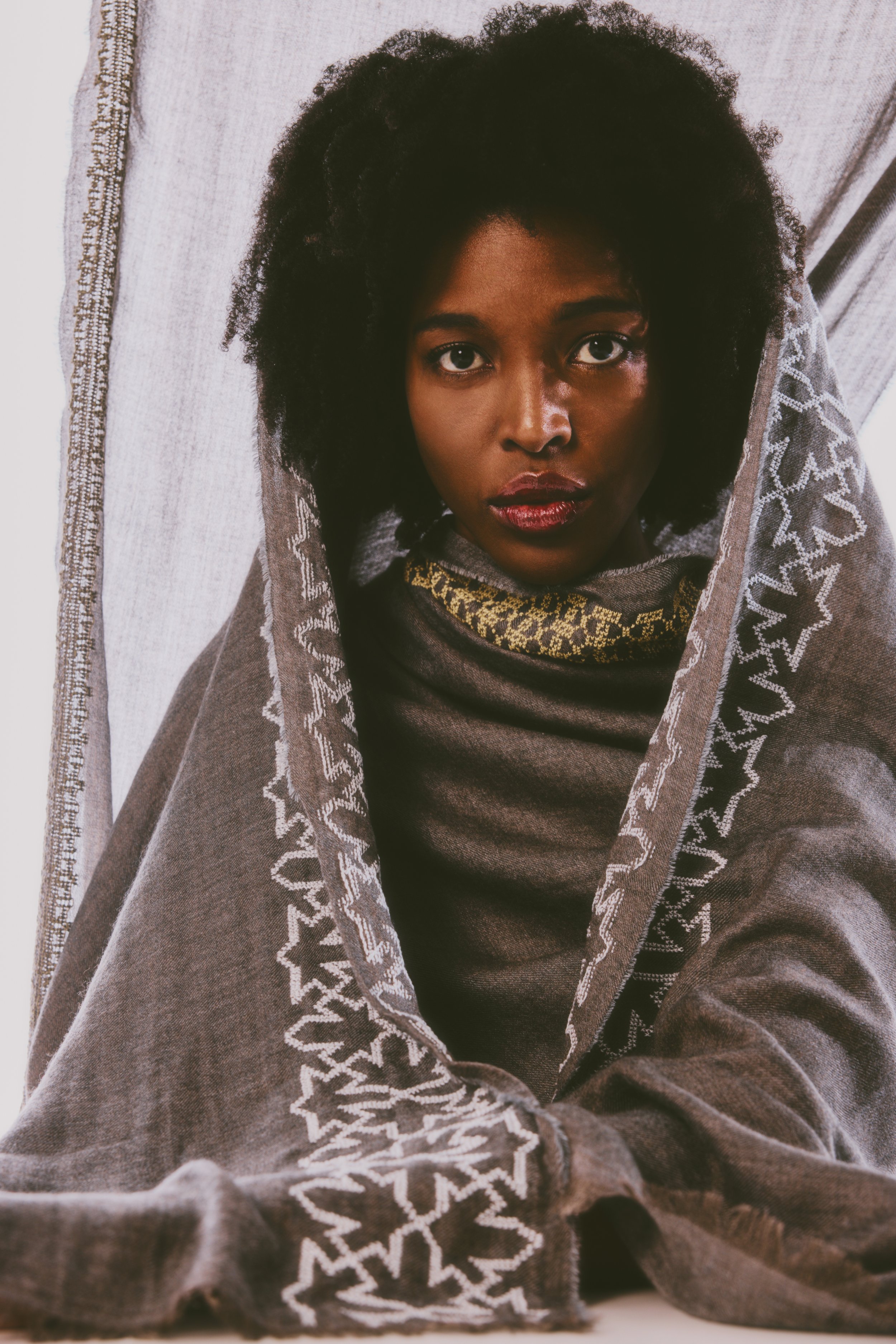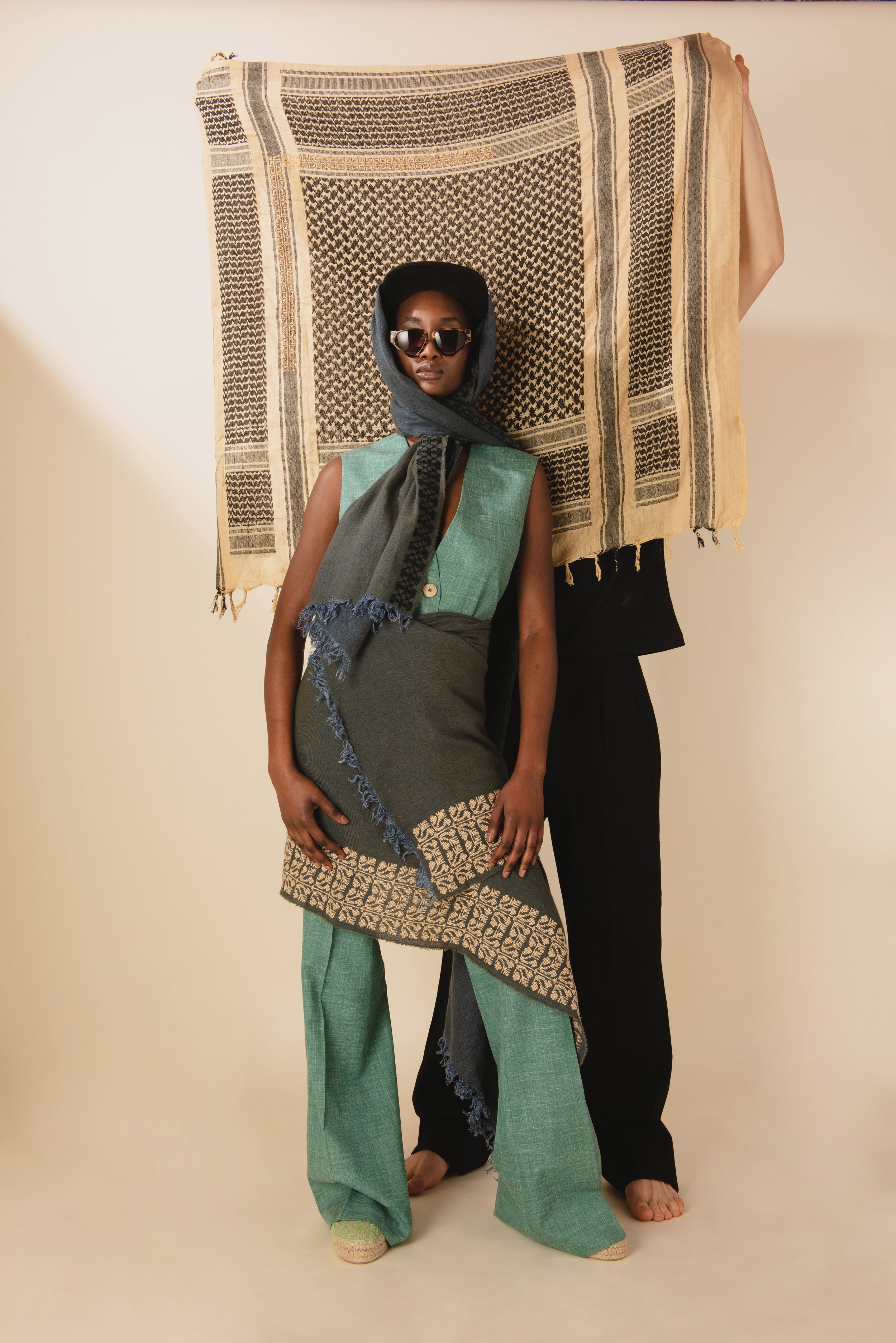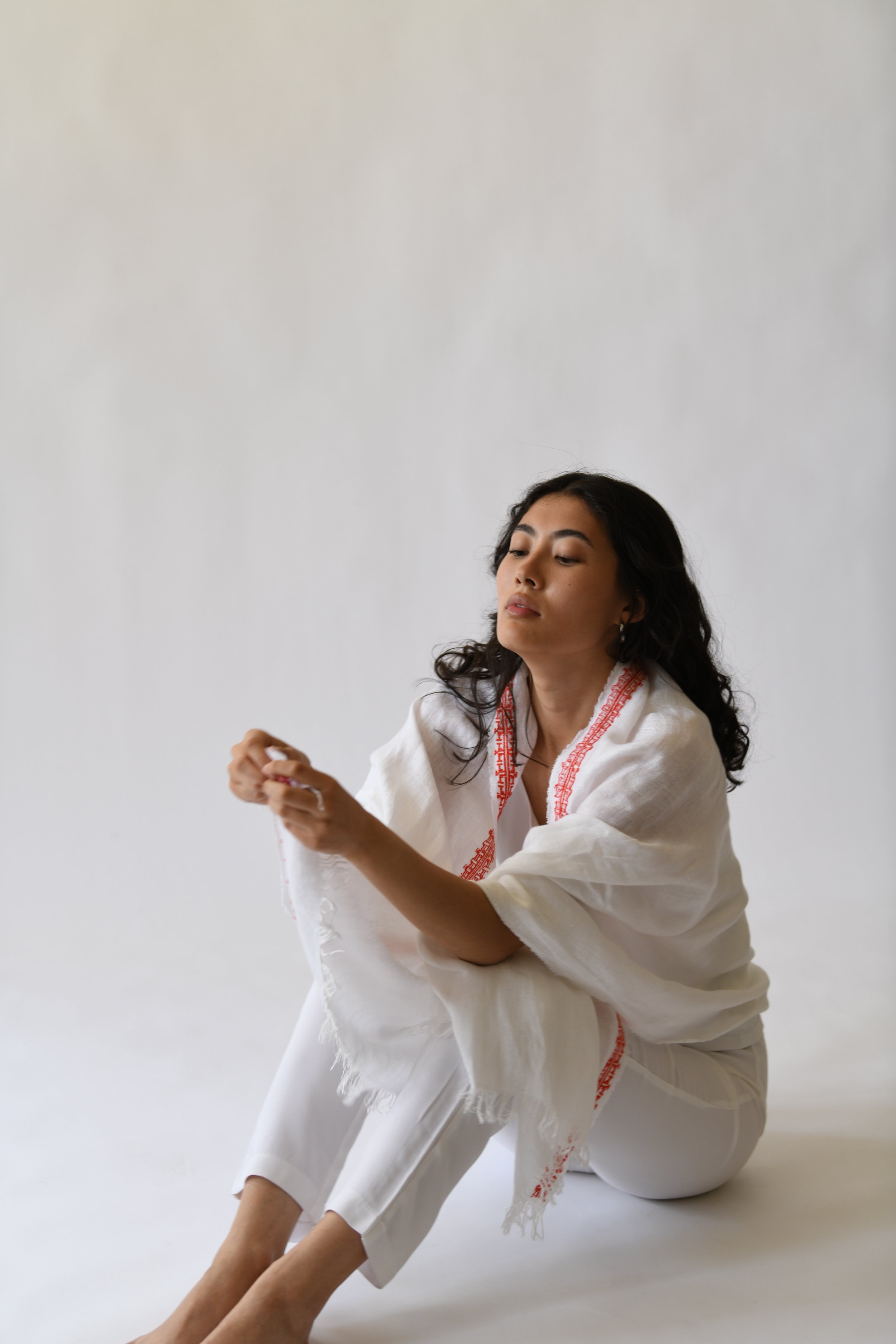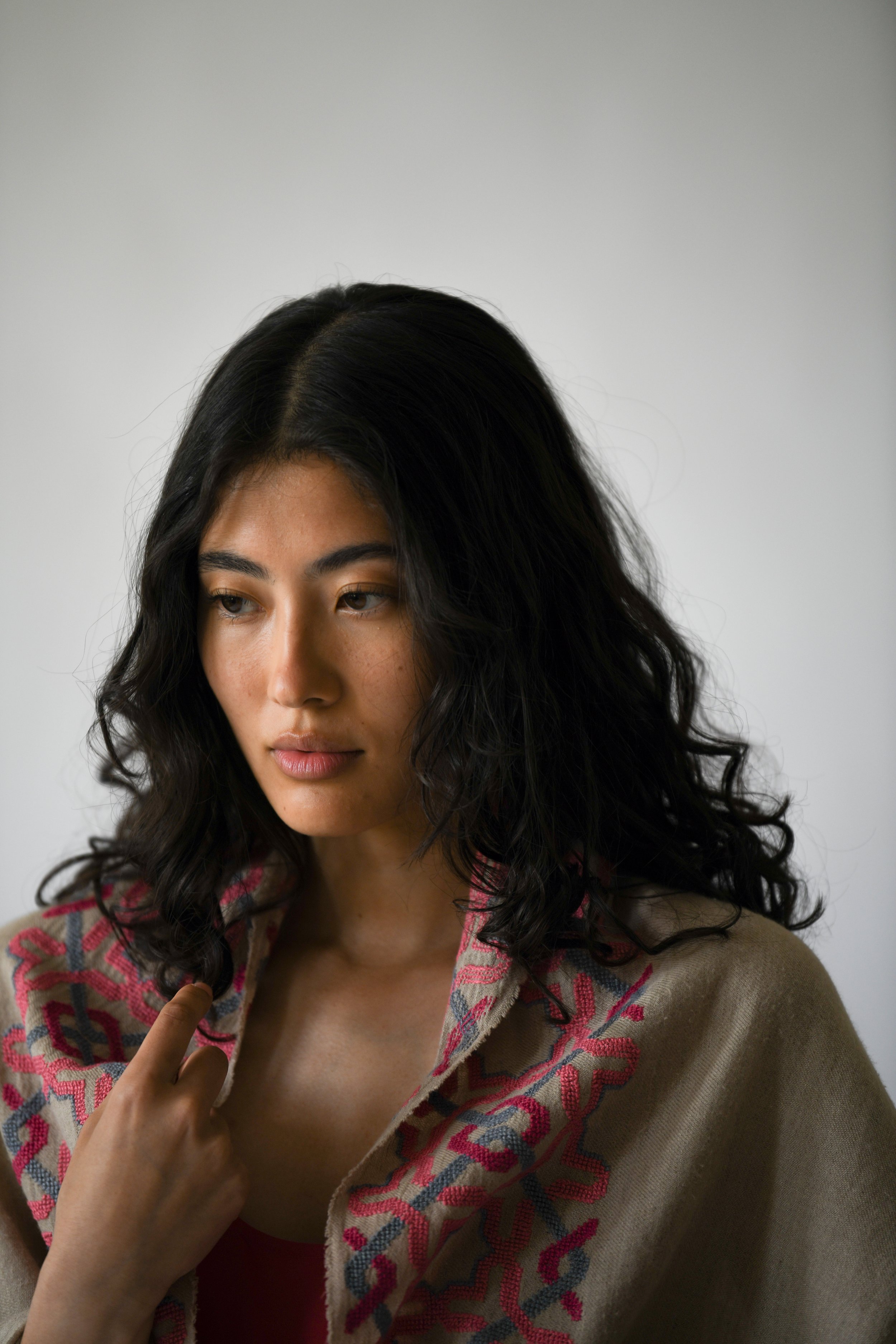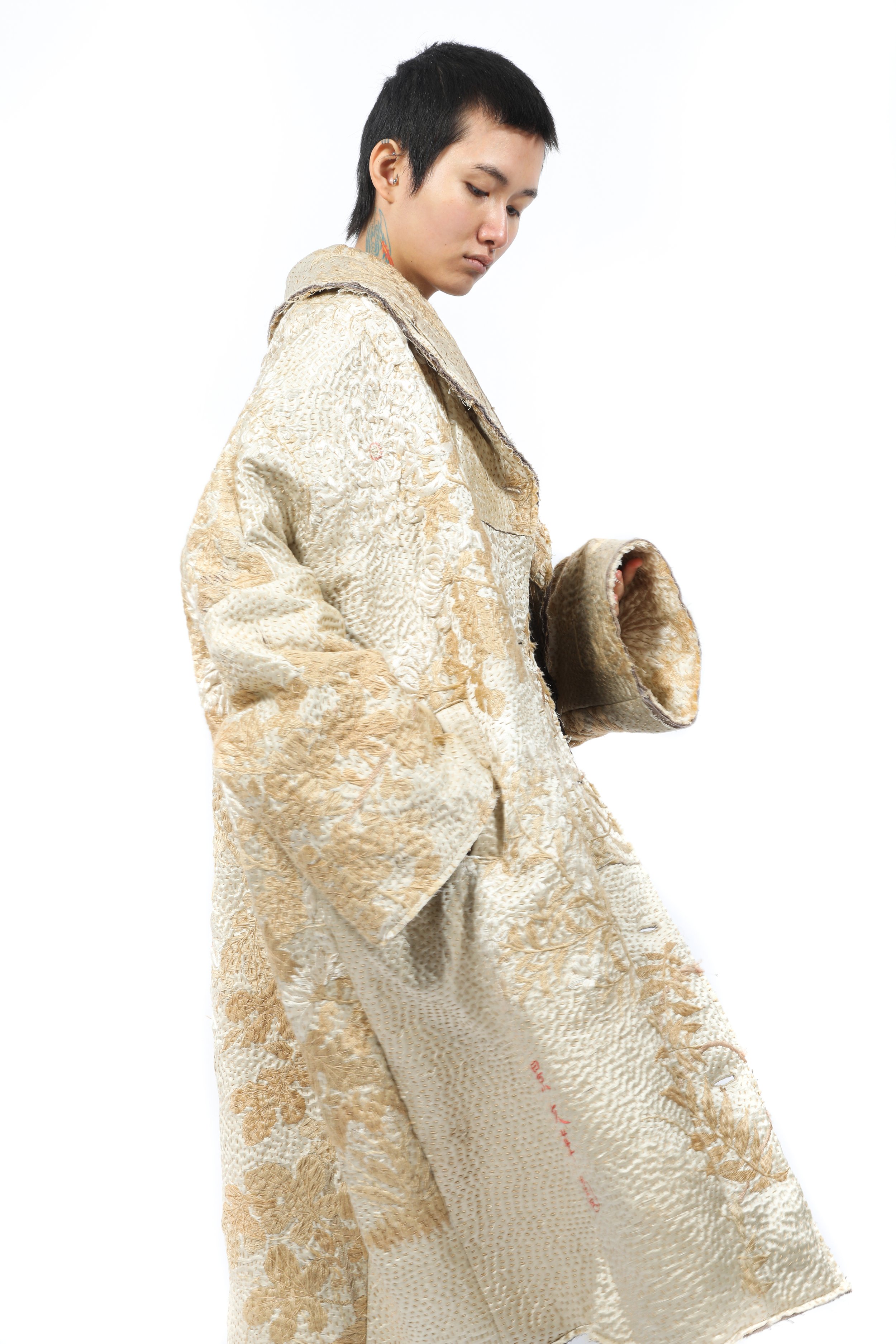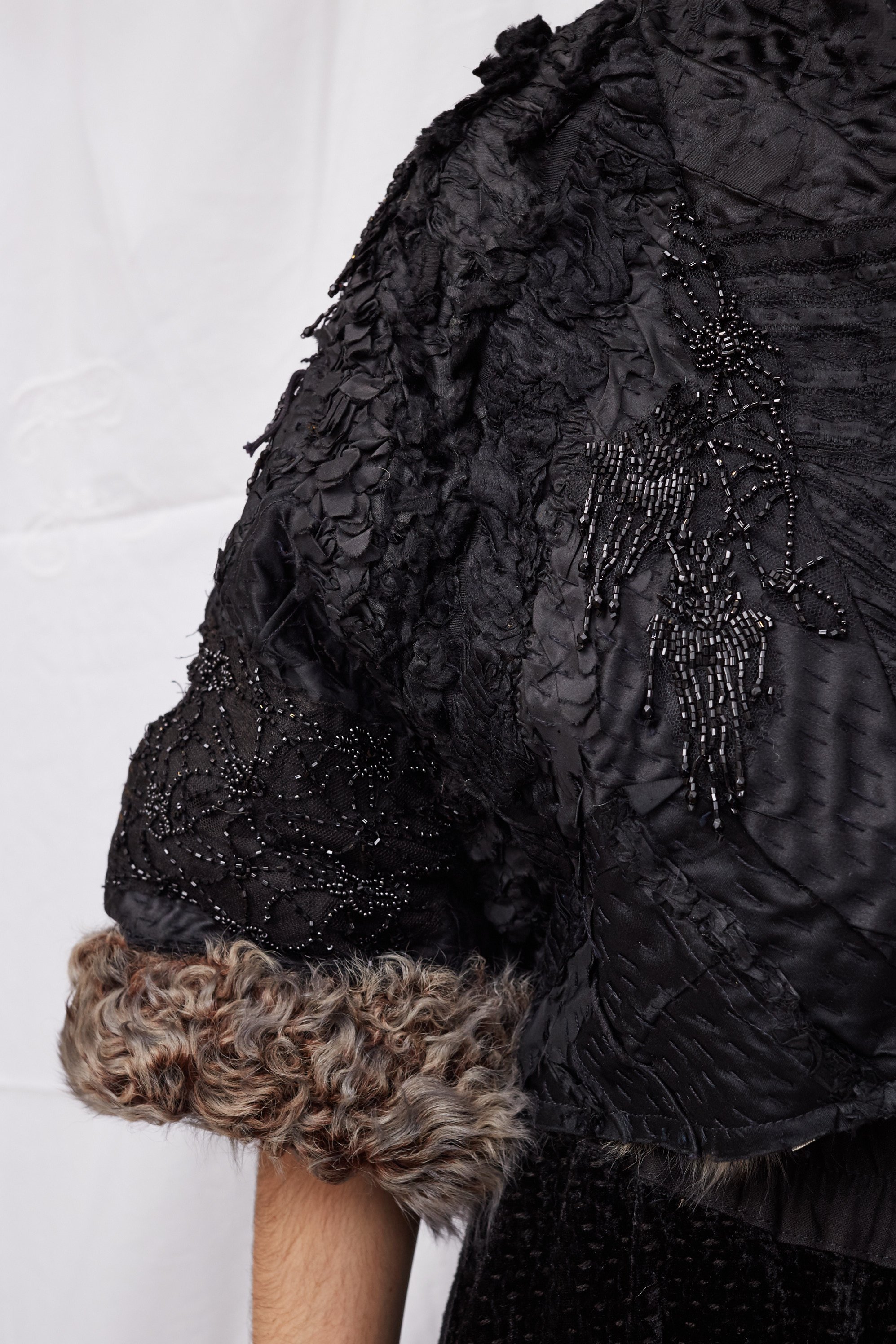
Zarif Design
Connecting and Celebrating the Crossroads of Civilizations
Zarif Design is a Kabul based fashion label born out of the desire to change the world view of Afghanistan by celebrating its rich cultural and geographic heritage.
Inspired by the beautiful Afghan landscapes, architecture and people, Zarif aims to preserve the material tradition of Afghanistan by merging it with a modern, crisp, tailored aesthetic.
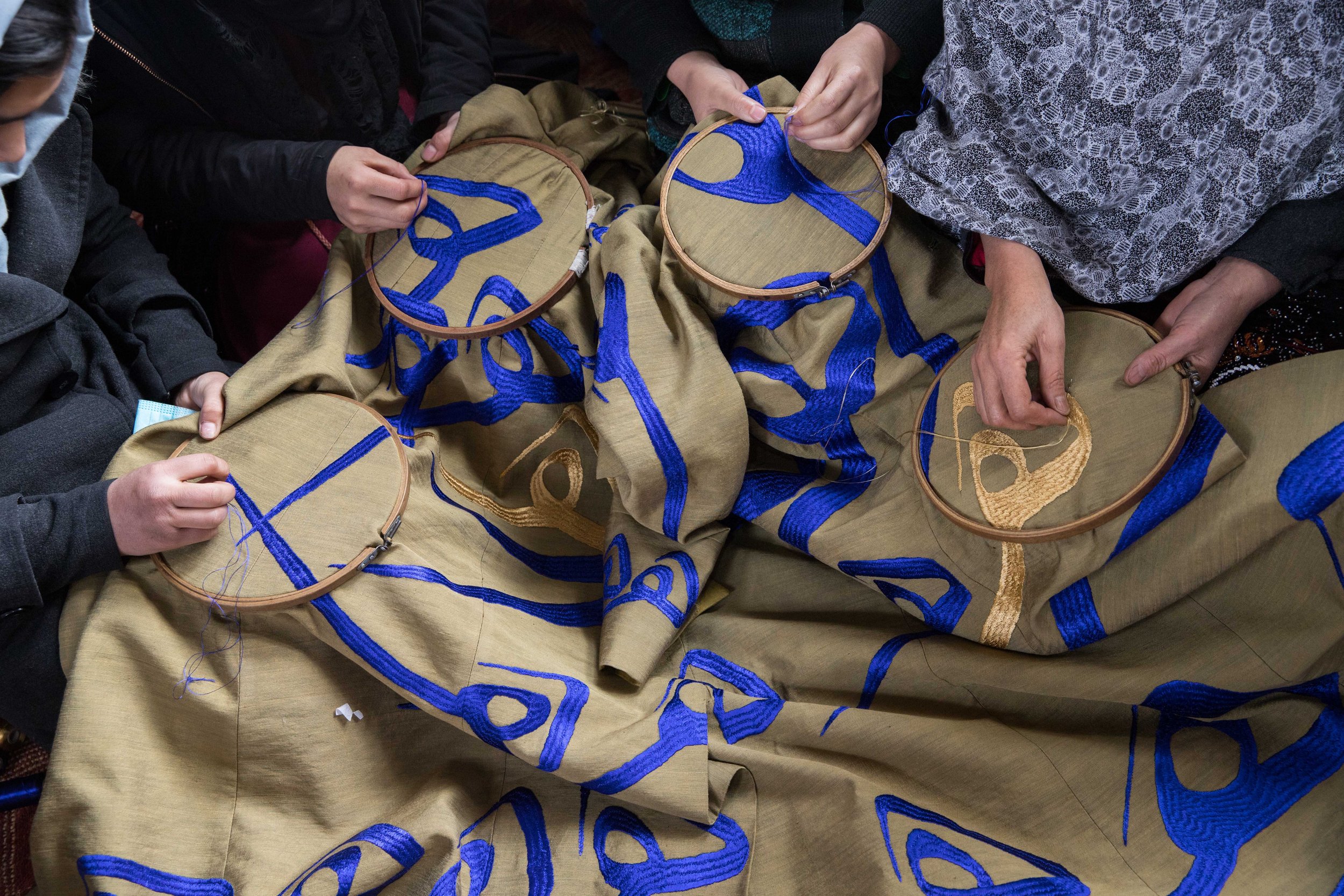
Established in 2005, Zarif Design’s vision is to use fashion as a vehicle to connect and empower communities of weavers, tailors and embroiderers. Their primary mission is to support communities economically and socially by strengthening traditional skills. As asocial enterprise, Zarif offers employment opportunities for both men and women by promoting the preservation of traditional Afghan craftsmanship.
The collection is produced in Kabul and employs local Afghan artisans, it helps to revive tradition by empowering them to find dignity and pride in the expression and communication of their cultural identity.
Sourcing traditional fabrics from Afghanistan as well as across the silk road through fair-trade practices, Zarif only work with natural fibres and dyes. The journey for a Zarif Design starts in the heart of Herat, once part of the silk road and the historical centre for silk production, where the silk is produced and spun into thread. The fine silk threads are then transported to Mazar Sharif, where the weaving takes place and where the fibre is hand dyed to produce Zarif’s beautiful “Chapan” fabrics.
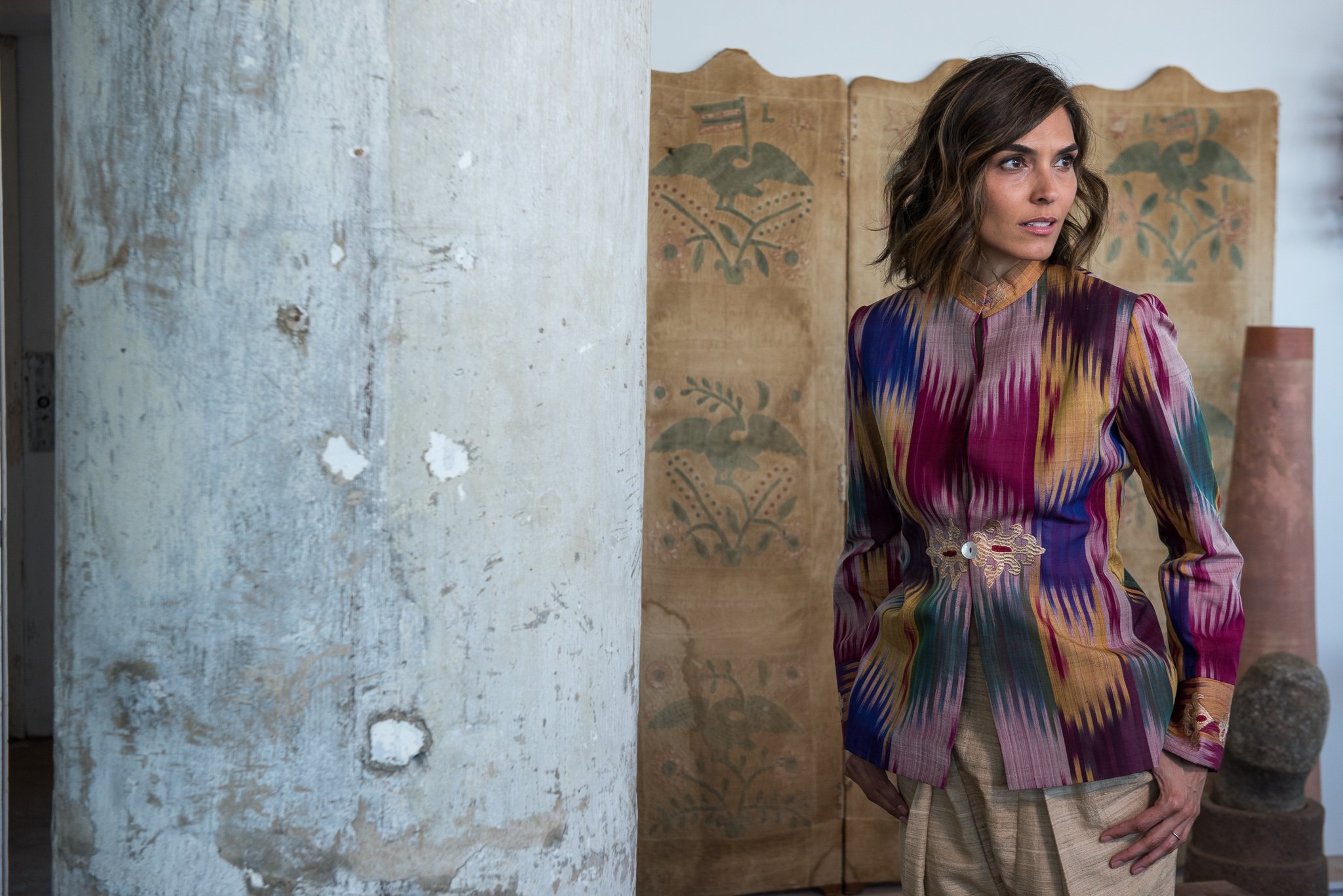
Sourcing traditional fabrics from Afghanistan as well as across the silk road through fair-trade practices, Zarif only work with natural fibres and dyes. The journey for a Zarif Design starts in the heart of Herat, once part of the silk road and the historical centre for silk production, where the silk is produced and spun into thread. The fine silk threads are then transported to Mazar Sharif, where the weaving takes place and where the fibre is hand dyed to produce Zarif’s beautiful “Chapan” fabrics.
Zarif’s first collection was inspired by vintage garments and antique embroidery which they collected from across Afghanistan and Central Asia.
The pieces were deconstructed to inform Zarif designs with a sense of history as well as production methodology.
As a result, Zarif designs are based on the reinterpretation and transformation of their research into these century old artefacts. Items from the heritage collection were produced from vintage materials and made to order.
These exquisite pieces combine elements of style from the traditional men’s coat called a “Chapan” with beautiful embroidery.
Designs are bold and graphic, in unexpected, rich colour combinations of stripes, with exquisite embroidered Arabesque borders or subtle ikats, paired with crisp contemporary cuts.
Zarif excel with coats and jackets where the Arabesque touches have the space to be expressed as expansive calligraphic flourishes.
Afghanistan is a country rich in natural resources, in particular, rare mineral deposits. They are also the third largest producer of saffron and cashmere. Nevertheless, Afghanistan remains one of the worlds least developed countries with one of the lowest per capita GDP. Having suffered from decades of terrorism, governmental and military coups and invasion from the Russians, the British and the US, Afghanistan experiences major problems with poverty and child malnutrition.
Afghanistan remains one of the poorest countries in the world in great part due to loss of foreign investment since the Taliban insurgency. In 2021 stores catering to foreigners and embassy staff were closed in Kabul when the Taliban re-established the Islamic state. Women are required by law to wear full-body coverings in public. Female teachers and students are forbidden from returning to secondary school, to work, to appear on TV, or even just go for a walk in the park. Nevertheless, Zarif still manage to operate their workshop. The work has slowed but they still make around sixty-one, of-a-kind pieces per month mostly sold through pop up events in Paris and New York, or directly online through their website.
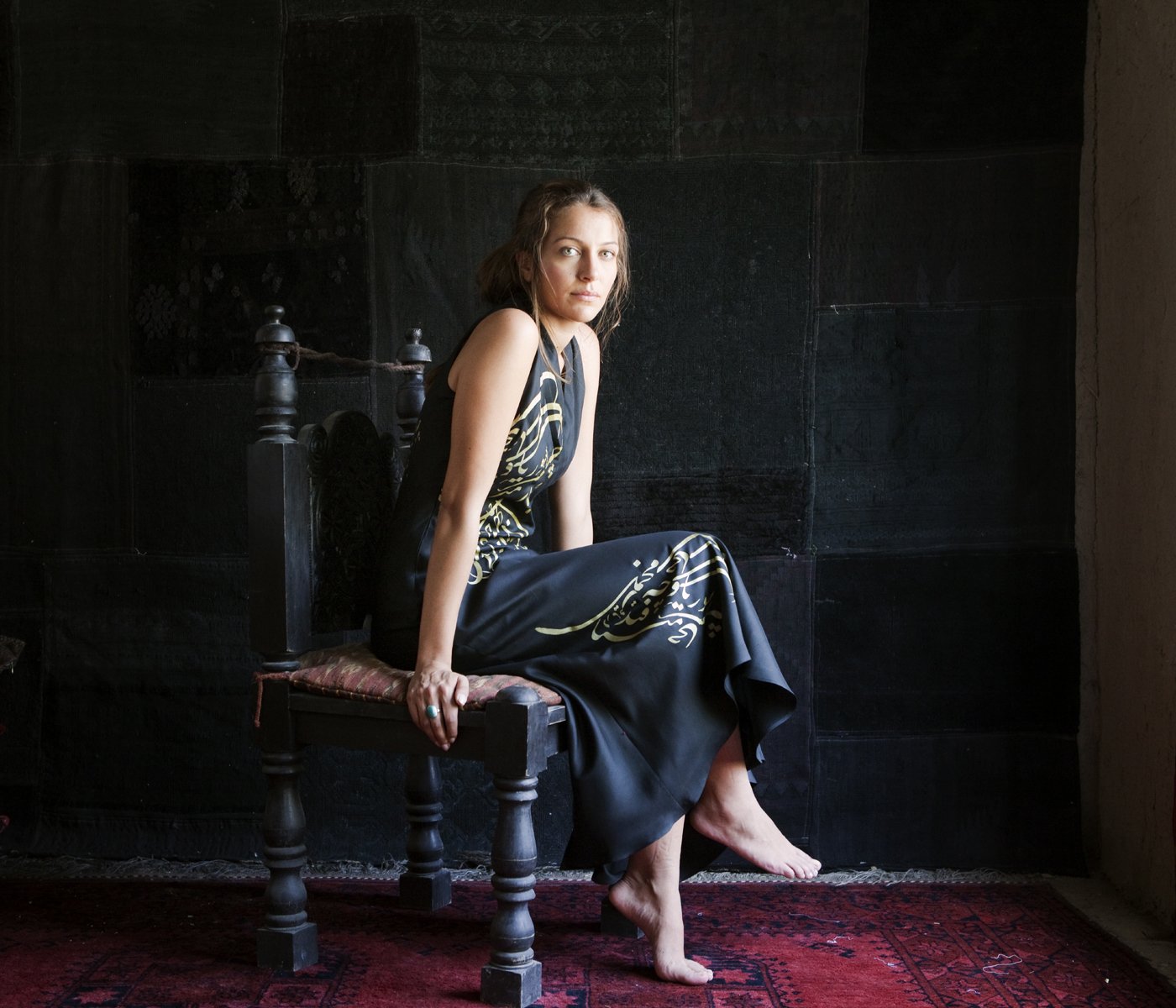
Afghanistan remains one of the poorest countries in the world in great part due to loss of foreign investment since the Taliban insurgency. In 2021 stores catering to foreigners and embassy staff were closed in Kabul when the Taliban re-established the Islamic state. Women are required by law to wear full-body coverings in public. Female teachers and students are forbidden from returning to secondary school, to work, to appear on TV, or even just go for a walk in the park. Nevertheless, Zarif still manage to operate their workshop. The work has slowed but they still make around sixty-one, of-a-kind pieces per month mostly sold through pop up events in Paris and New York, or directly online through their website.

Zarif employ almost thirty full time staff, mostly women, and are training many more young women as tailors.
In addition, they have a network of weavers who they work with on an as needed basis.
All materials come from Afghanistan, not simply because of lack of access to materials beyond the border, but also in support of the local economy.
Zarif still operate a studio in Afghanistan, albeit downsized from their previous two.
The situation for a commercial women-led fashion brand remains challenging with no systems to transfer money for product sales and no more access to international shipping, hence why many of their sales are based around pop ups in other regions of the world, often run by volunteers with online sales barely possible.
With a particularly dedicated community of supporters in France, many of their pop-up events have centred on that region.
Other sales events have been the outgrowth of individual collaborations, such as with Deepak Chopra, agnes.b in France and Diane von Furstenberg in the US, all long-time supporters of Zarif’s work. With pop ups scheduled every three months, Zarif focus on selling one of-a-kind items.
Zarif have participated in a number of design collaborations, including with TSE Cashmere for their spring 2014 collection, producing beautiful men’s shirts that featured hand embroidery produced by the women of Zarif. Not only did the collaboration honour the tradition of indigenous craftsmanship by using the hand-woven materials of Afghanistan, but $50 from every sale was donated directly to an organisation supporting higher education for girls.
The studio remains a powerful space to elevate women’s voices through the work of their own hands, a space where women can work together to effect meaningful change.
•
Build it
•
Grow it
•
The studio remains a powerful space to elevate women’s voices through the work of their own hands, a space where women can work together to effect meaningful change. • Build it • Grow it •
Find Zarif Design at:
Website: https://www.zarifdesign.com
Facebook: https://www.facebook.com/ZarifDesign/
YouTube link: https://www.youtube.com/watch?v=7Y1celW1aRA
Twitter: @zarifnyc

SEP Jordan
Italian Style and Middle-Eastern Craftsmanship
The Social Enterprise Project or SEP for short, is a luxury fashion and lifestyle brand with social impact at its core.
Founded in 2013, they were the first Jordanian private company to set up in the Jerash Camp in Jordan.
SEP work in collaboration and in partnership with over 500 refugee embroidery artists, predominately from Gaza, to support sustainable paths to economic independence in a place where few other options exist.
SEP is a Certified B Corporation where society and the environment are considered stakeholders of equal standing as profit. Their mission is to help bring thousands of women refugees and their families out of poverty by empowering them to leverage their skills and talent and become change-makers with a positive impact on their community.
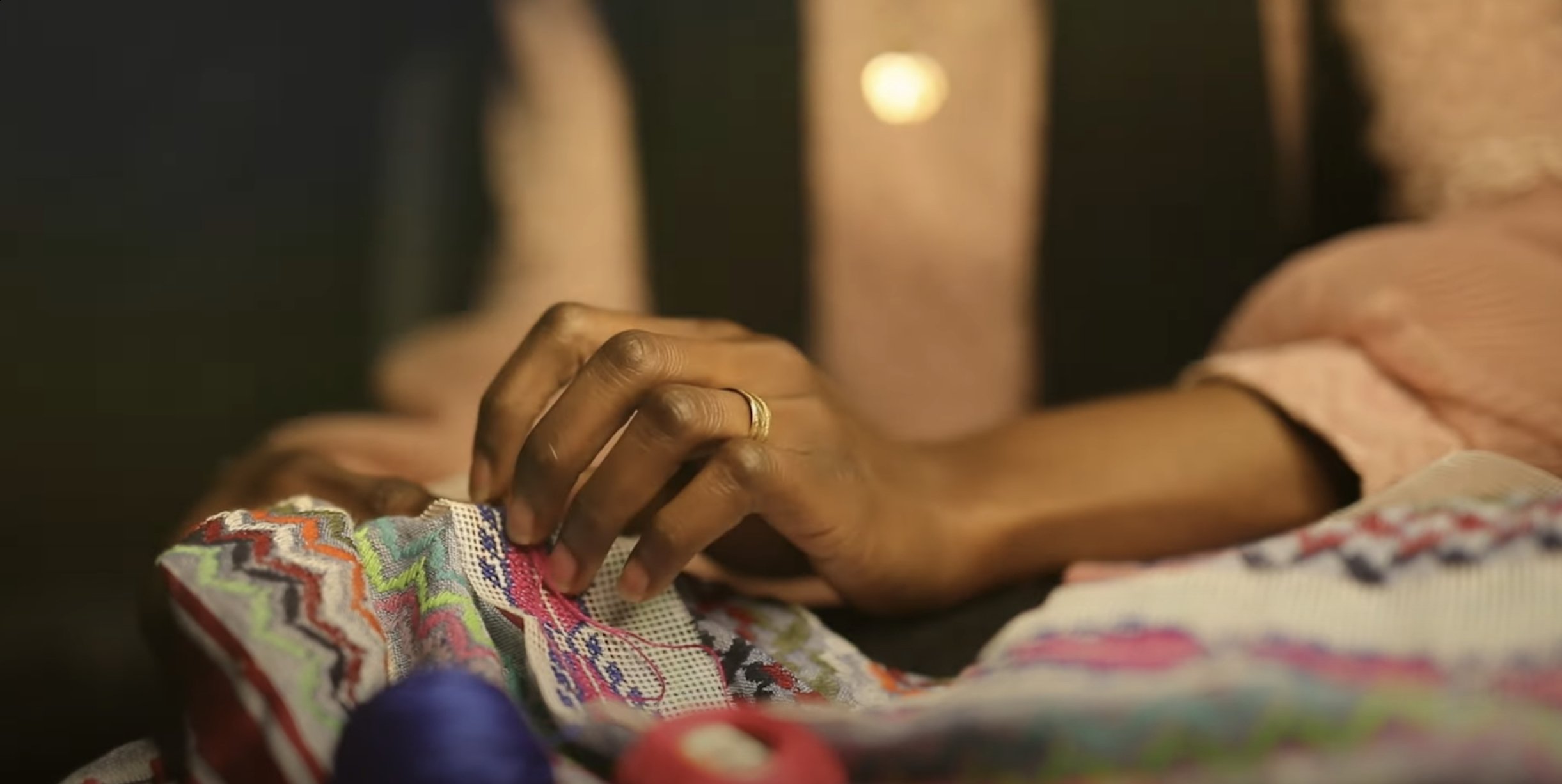
More than 114 million individuals have been forcibly displaced worldwide as a result of persecution, conflict, violence or human rights violations (UNHCR 2023). We are currently witnessing the highest levels of displacement on record, with the largest ever single-year increase in forced displacement in UNHCR history (2023), with numbers only set to increase. Despite the intended temporary nature of these camps, the average amount of time a refugee stays in a refugee camp is 17 years, causing a cycle of mental and physical health issues that too often start with gratitude and end in depression and hopelessness. Too many live in overcrowded conditions with poor sanitation and hygiene, lack food security and access to fresh water and health care, and live under the constant threat of violence (PCRF, no date).
Palestinians are the world’s largest stateless community (US News, 2024). In the wake of the current iteration of the Israel Palestinian conflict, Palestinians have been displaced in enormous numbers, with about 1.9 million forced to feel their homes in the past few months alone, and 33,000 killed by air and artillery strikes. The ongoing conflict has resulted in around 7 million Palestinian refugees around the world, many thousands of whom were forced to flee from the 1948 Nakba (refugees International, 2024).
The Jerash Camp in Jordan where SEP operate, was set up in 1968 for 11,500 Palestinian refugees and displaced persons from the Gaza Strip as a direct result of the Arab Israeli war (UNRWA 2023). Gazans constitute approximately 90 percent of registered Palestinian refugees living in the camp, alongside some Syrian refugees. The Gaza camp as it is known locally, is the poorest of all the Palestinian refugee camps in Jordan, of which there are 10. Most residents don’t have residential status, meaning they are severely limited in their ability to earn a living, access
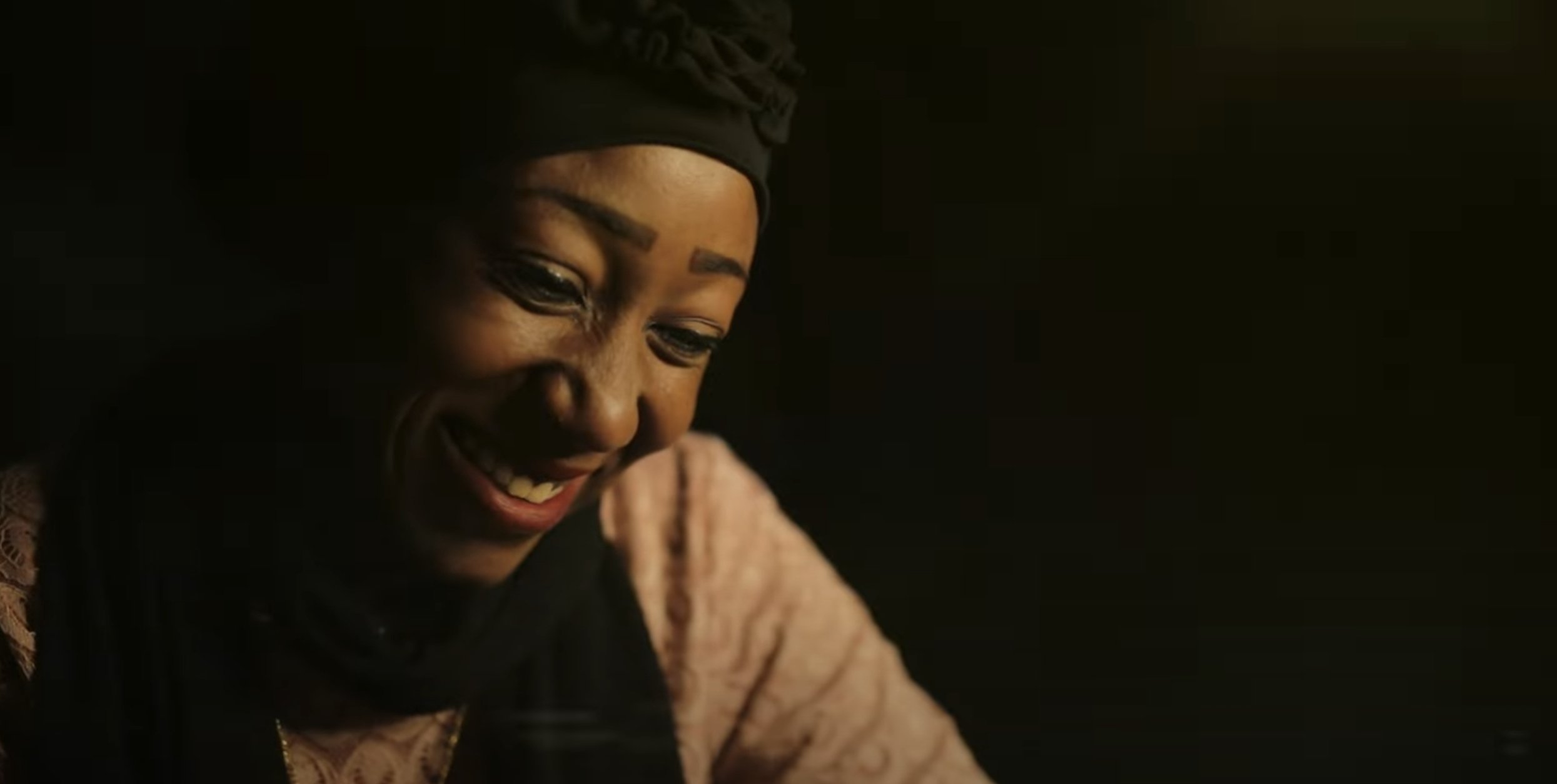
Having fled their homes, refugees leave behind their entire lives. Some fled before completing their education, while others are highly skilled professionals struggling to use their skills to gain employment. According to the International Rescue Committee, giving artisans a job allows refugees to build social and professional networks, become active participants in their community and contribute their valuable skills.
At the core of the work SEP do, is hand embroidery with techniques and traditions that represent the cultural heritage of the refugees.
They help to protect, treasure and celebrate those traditions by combining Italian style with Middle Eastern craftsmanship.
SEP operate four stores, one in Geneva, one in Milan, another in Berlin and the third in Amman, as well as an eCommerce website that sells a range of luxury fashion and home accessories.
The work they do results in real change in the lives of the 500 craftswomen they work with, granting them self-sufficiency, a sense of pride, self-esteem and dignity.
SEP fulfil the UNs Social Development Goals 1, 3, 8, 10, 12 and 17: relating to poverty, good health and well-being, decent work and economic growth, reduced inequalities, responsible consumption and production and partnerships for the goals.
Since their inception, SEP have worked with over 800 artists, with an impact documented as improving 87 percent of artisan’s mental health.
They pay 50 percent higher than the market rate, offering benefits and performance-related bonuses.
They have provided more than 160 pairs of glasses to artists and 849 of SEP artists children have attended after school activities through the SEP Academy since 2019 alone.
The SEP Academy was founded in the Jerash Camp in 2016 in collaboration with UNHCR, where they train hundreds of refugees in the art of embroidery.
Training includes the traditional cross stitch technique used in classic Palestinian textiles, but also the almost extinct Bethlehem couching technique and others.
Cross stitch is done through canvas onto a variety of fabric grounds where stitches cannot be counted, with the canvas painstakingly deconstructed thread by thread after the work is complete.
The collection revolves around the iconic Palestinian Keffiyeh, traditionally produced in classic red or black in well-established patterns, which is augmented by a range of non-traditional colourations produced in Jordan by one of the last Keffiyeh producers.
New patterns and designs are inspired by traditional Islamic geometry, relating to theological and mystical thought, with patterns built on combinations of repeated squares and circles with overlapping and interlaced designs forming intricate and complex patterns and tessellations.
SEP work with the traditional registered patterns of Alhambra, Koutubia, Putrajaia, Sultan Han and Al Quds, each of which are cross-stitch adaptations of architectural masterpieces.
These traditional patterns adorn scarves, fashion and home accessories.

Traditional Palestinian patterns continue their traditional ceremonial and heritage roots, helping to maintain tradition in a refugee camp far from home.
Traditional poppy, flame, rose, star, and Murano embroidery patterns keep histories alive of village life, steeped in ancient history, with each style, pattern and colour linked to a region, or village, expressing marital status.
Working across cultures in a refugee camp requires respect for tradition and culture as well as a cross-cultural awareness from the Italian based management team.
Production is done by the refugees in the Middle East, with all embroidery and most of the assembly done entirely by hand, while Mongolian and Chinese cashmere of the highest quality is processed in Italy.
SEP also work with cotton embroidery thread and wild flax from Lithuania where it is spun and dyed.
SEP operate to a rigorous international standard of quality and efficiency with a focus on waste avoidance to produce a beautiful collection steeped in history and tradition.
Each stitch tells a story of resilience and helps change the perception of refugees from recipients of aid to contributing, talented artists in their own right.
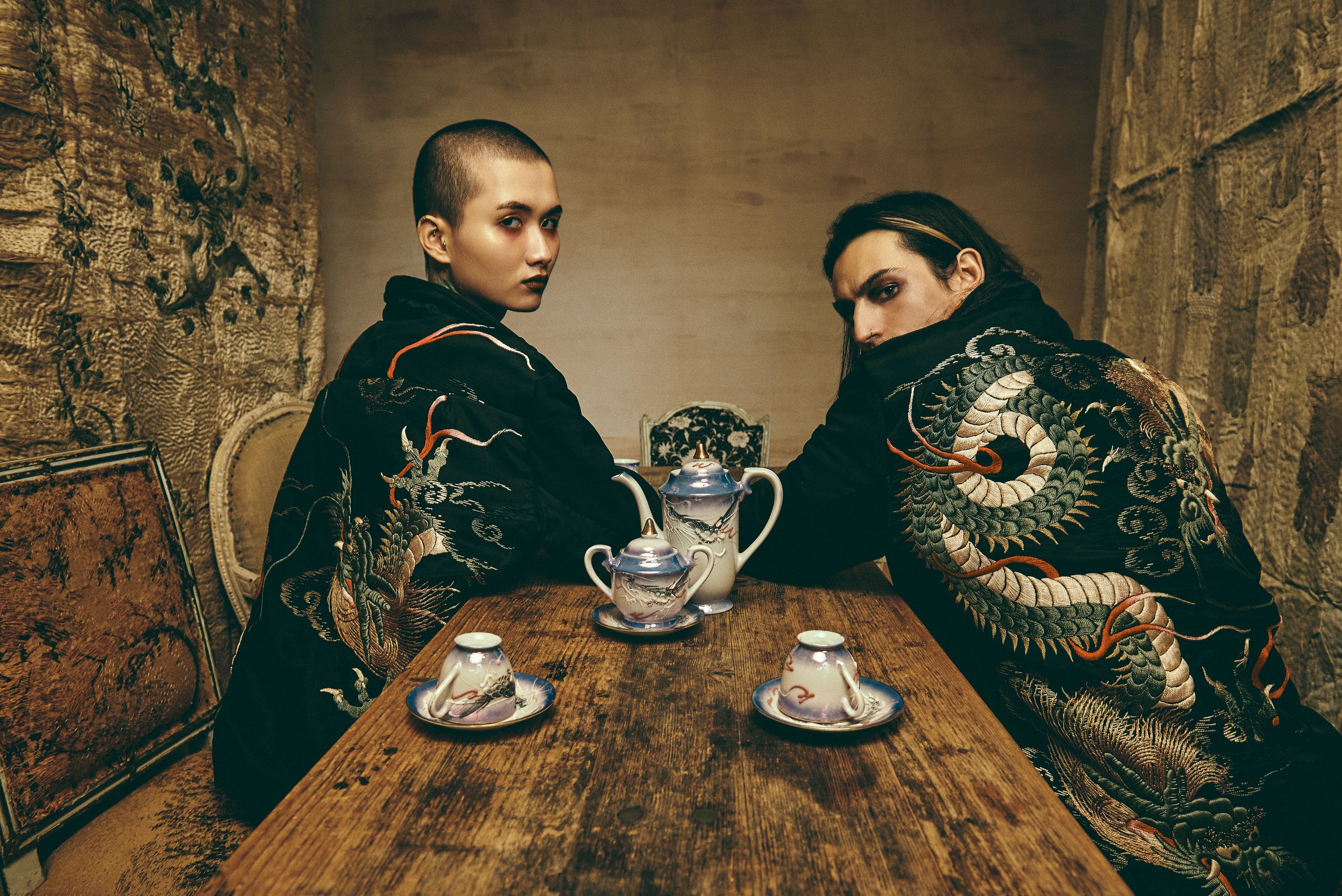
By Walid
One of a Kind Wearable Art
Rococo silk, belle epoque passementerie, 18th-century ecclesiastical embroideries, and hand-embroidered Spanish shawls are the raw materials master craftsman Walid Damirji uses in the creation of his one-of-a-kind designs. Revaluing precious and historic materials by refashioning them into luxury clothing.
Sitting amongst piles of vintage materials from around the world, wearing an embroidered shirt and sitting on a patchworked vintage chair, Walid looks at home in his environment, and the world he has constructed, made of fabrics piled high, hailing from every material culture imaginable.
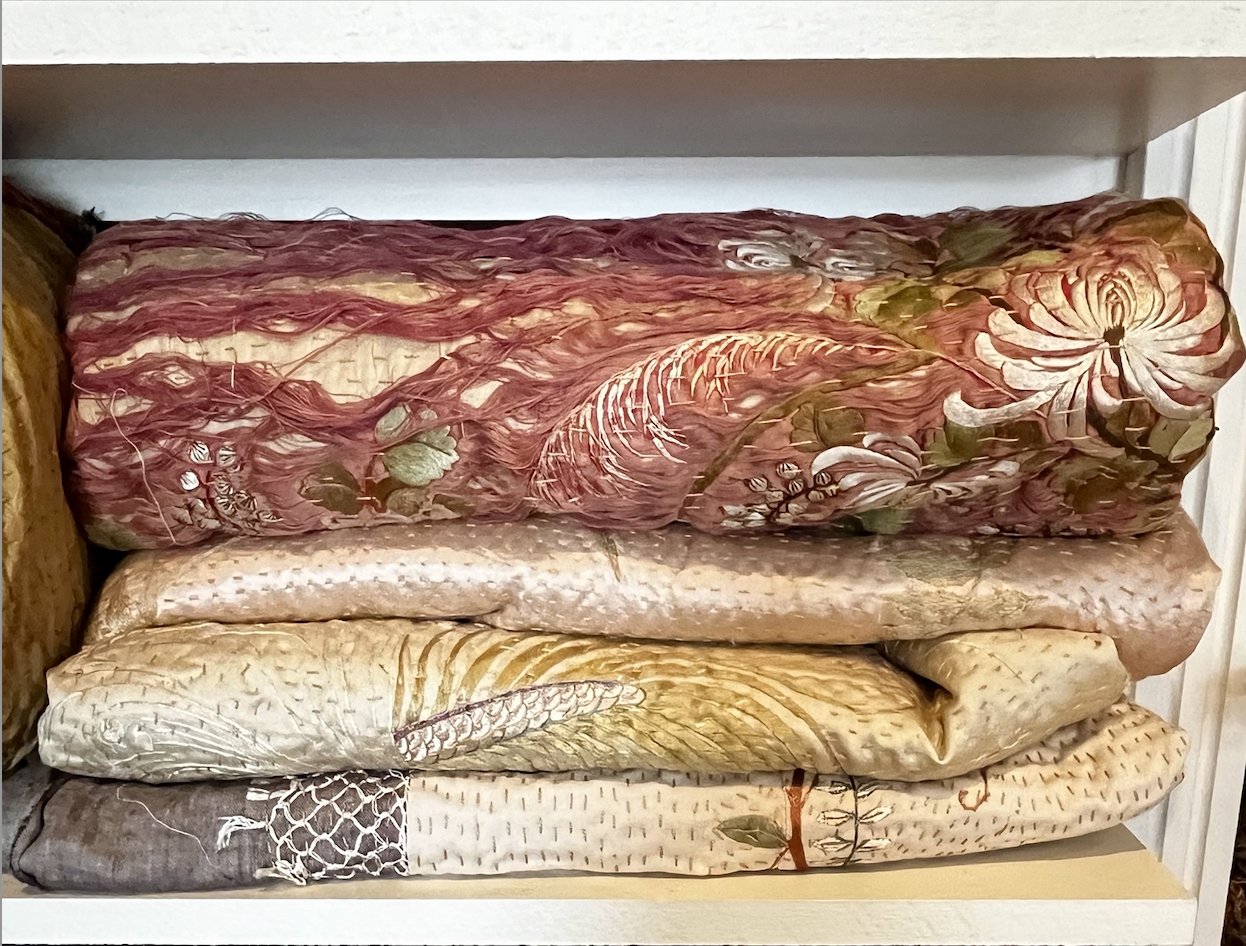
By Walid is a British fashion label specializing in contemporary pieces for men and women made from exquisite upcycled antique textiles. Established in 2011, founder Walid Damirji’s creations extend beyond fashion into the home with covetable patched and pieced soft furnishings, furniture, and sculpted heads. His distinctive aesthetic is instantly recognizable, often featuring kantha style running stitches that reinforce the fragile and damaged textiles by attaching them to a stable backing material of wool, linen or khadi cotton, creating spirals, circles, waves, and geometries in the process, which he poetically names rain, butterfly and falling brick patterns. The more discoloured and damaged the textiles, the more Walid likes them, finding value and beauty in turning discarded materials into aspirational designs.with an idea.
Walid’s creations are truly the epitome of slow fashion, taking up to six months to clean, repair, back and stitch fragile historic textiles, all before the creation begins. He makes the relationship between creator and wearer explicit by creating an emotional attachment to the very threads of the fabric. The embedded stories and histories create a tangible connection between the past and the present. This is investment clothing, unique, authentic, and meaningful, flying in the face of fast fashion and transient trends, Walid’s clothing begs to be enjoyed and treasured for a lifetime, each wear adding new stories to the provenance of the cloth. These are clothes that speak of craft and history – true luxury, taking many long months and the labour and skill of many hands to revive these heirloom textiles. Working with the likes of Italian 17th-century ecclesiastical damask and ottoman velvet, the textiles that are not only rare but time-consuming to bring back to life.
The British-Iraqi designer uses a zero-waste philosophy to construct his designs, ensuring every precious scrap of the heirloom textiles are utilized in making shirts, hats, bags, shoes, and fine art. Traveling the world like a textile anthropologist, he gathers exquisite material relics, each more precious than the next, assembling them into exquisite concoctions that traverse continents and histories.
The collection is not seasonal, and Walid prefers to work locally which inevitably raises the price of the end product. “I don’t feel I have to reinvent the wheel every season”. His very first jacket from fourteen years ago is still available for order. He recycles ideas constantly, with a recent return to a range of jackets developed from upcycled 19th century opera gloves, an idea he first pursued years prior, he works and reworks ideas again and again. There is inevitably an innate finiteness to working with materials in limited supply, allowing each design to be defined by the textiles themselves.
“History and ancient fabrics have always been an obsession for me. I like to take apart old clothing, tablecloths, alter pieces, and gloves and reimagine them.”
Walid dislikes retro dressing preferring to rework materials.
“I term my position within this company as a role to reinvent and give new purpose to unwanted castaways.”
He sees the beauty in each and every precious scrap, respecting the ancient craft of textile artisans by bringing them into the 21st century through their incorporation into new aspirational pieces.
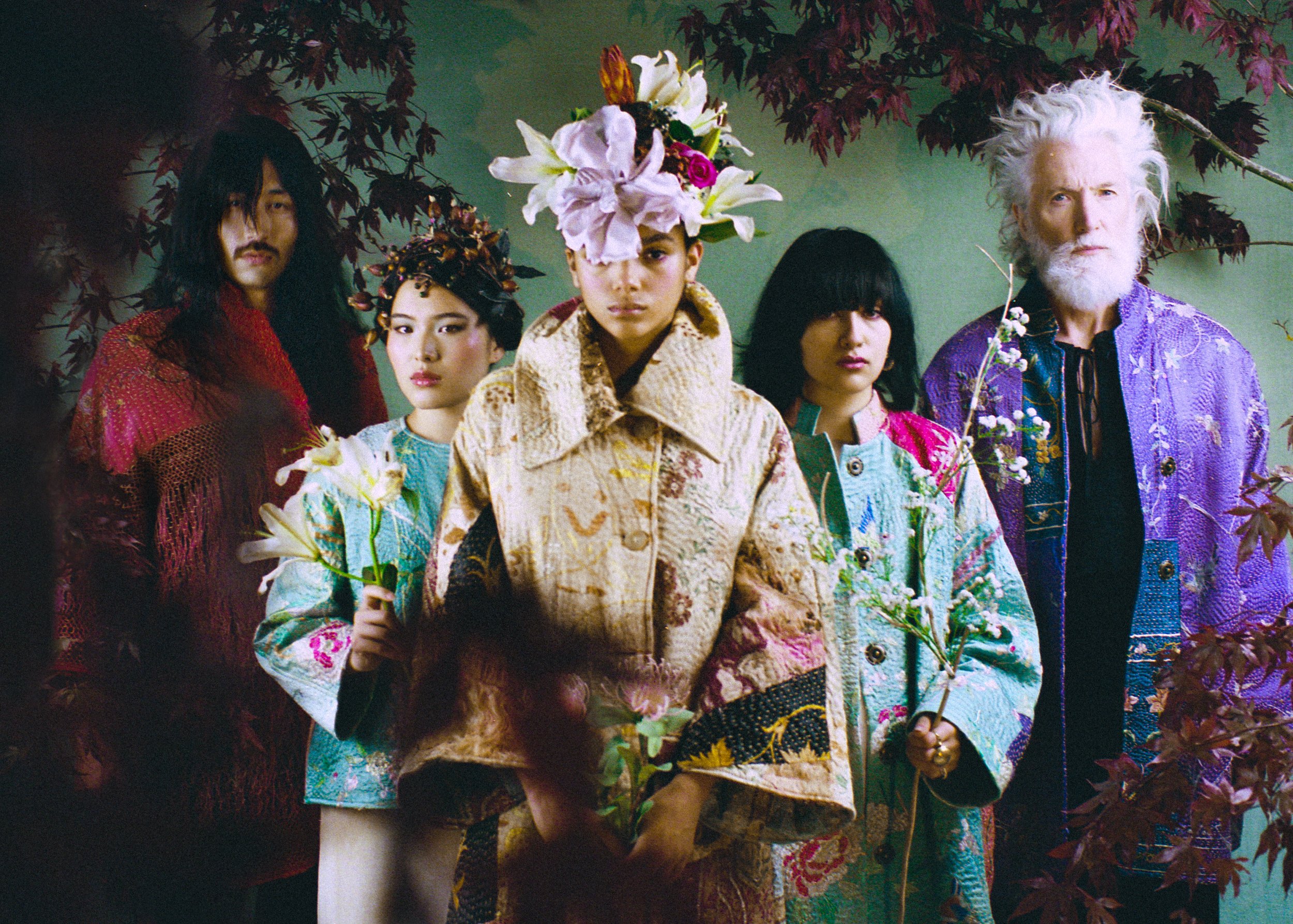
“I don’t feel I have to reinvent the wheel every season”.
The homeware line began a little before COVID lockdown and helped sustain them during that difficult period through an increased interest in luxury lifestyle products. The entire team worked from home, helping to sustain them as individuals as well as By Walid as a business, when so many others were losing their jobs and closing their businesses. The team now consists of between eight and ten people, with duties divided between material processes and admin depending upon skill sets. Walid operates two separate workspaces the creative and the process driven, one where the fabrics are cleaned and repaired - a job that requires space, and the other where they are dyed, stitched, fixed, and finally recombined and created anew. Creation is a collaborative process with ideas bounced off the team. They operate like a cottage industry.
Having spent half a lifetime working in fashion, Walid has always incorporated some form of repurposing in his work. It all started with one hemp 18th century linen jacket that he made for himself which editors and buyers alike just wanted, and so By Walid the label was born. Pushed to show in Paris, but going without expectations, he was overwhelmed with orders from Joyce, Barney’s, Browns, and other key accounts around the world. He sold 900 jackets, with retailers requesting he expand the collection from jackets to incorporate other items. He now produces men’s, women’s, children’s, footwear, and homeware. Because of the precious nature of his work, Walid never allows stockists to over buy. His policy is to reduce store orders, pushing stockists to buy less. The last thing he wants is to see is his labour and creativity ending up in a resale shop. He also tries to set his own terms with retailers, an anomaly in an industry where retailers traditionally hold the balance of power over designers in regard to payment terms, returns and charge backs. Walid sells when he’s ready and doesn’t work to externally set deadlines.
